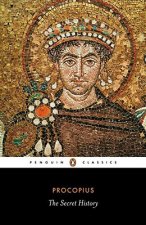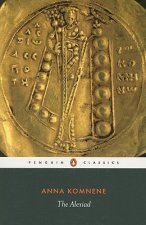
Kód: 04782362
Architecture and Hagiography in the Ottoman Empire
Autor Zeynep Yurekli
Based on a thorough examination of buildings, inscriptions, archival documents and hagiographies, this book uncovers the political significance of Bektashi shrines in the Ottoman imperial age. It thus provides a fresh and comprehe ... celý popis
- Jazyk:
 Angličtina
Angličtina - Väzba: Pevná
- Počet strán: 222
Nakladateľ: Taylor & Francis Ltd, 2012
- Viac informácií o knihe

Mohlo by sa vám tiež páčiť
-

American Experiment with Government Corporations
65.13 € -

Bert Weedon's Play In A Day
14 € -18 % -

Cobra Replicas
17.58 € -13 % -

Forgiving Life
22.28 € -4 % -

Role of Ethics in International Law
52.96 € -

Gawain Legacy
17.68 € -9 % -

Great Marriage Tune-Up Book - A Proven Program for Evaluating & Renewing Your Relationship
24.23 € -3 %
Darčekový poukaz: Radosť zaručená
- Darujte poukaz v ľubovoľnej hodnote, a my sa postaráme o zvyšok.
- Poukaz sa vzťahuje na všetky produkty v našej ponuke.
- Elektronický poukaz si vytlačíte z e-mailu a môžete ho ihneď darovať.
- Platnosť poukazu je 12 mesiacov od dátumu vystavenia.
Viac informácií o knihe Architecture and Hagiography in the Ottoman Empire
Nákupom získate 556 bodov
 Anotácia knihy
Anotácia knihy
Based on a thorough examination of buildings, inscriptions, archival documents and hagiographies, this book uncovers the political significance of Bektashi shrines in the Ottoman imperial age. It thus provides a fresh and comprehensive account of the formative process of the Bektashi order, which started out as a network of social groups that took issue with Ottoman imperial policies in the late fifteenth century, was endorsed imperially as part of Bayezid II's (r. 1481-1512) soft power policy, and kept under check by imperial authorities as the Ottoman approach to the Safavid conflict hardened during the rest of the sixteenth century. This book demonstrates that it was a combination of two collective activities that established the primary parameters of Bektashi culture from the late fifteenth century onwards. One was the writing of Bektashi hagiographies; they linked hitherto distinct social groups (such as wandering dervishes and warriors) with each other through the lives of historical figures who were their identity markers (such as the saint Hac Bektas and the martyr Seyyid Gazi), while incorporating them into Ottoman history in creative ways. The other one was the architectural remodelling of the saints' shrines. In terms of style, imagery and content, this interrelated literary and architectural output reveals a complicated process of negotiation with the imperial order and its cultural paradigms. Examined in more detail in the book are the shrines of Seyyid Gazi and Hac Bektas and associated legends and hagiographies. Though established as independent institutions in medieval Anatolia, they were joined in the emerging Bektashi network under the Ottomans, became its principal centres and underwent radical architectural transformation, mainly under the patronage of raider commanders based in the Balkans. They thus came to occupy an intermediary socio-political zone between the Ottoman empire and its contestants in the sixteenth century.
 Parametre knihy
Parametre knihy
Zaradenie knihy Knihy po anglicky Humanities History Regional & national history
224.87 €
- Celý názov: Architecture and Hagiography in the Ottoman Empire
- Autor: Zeynep Yurekli
- Jazyk:
 Angličtina
Angličtina - Väzba: Pevná
- Počet strán: 222
- EAN: 9781409411062
- ISBN: 1409411060
- ID: 04782362
- Nakladateľ: Taylor & Francis Ltd
- Hmotnosť: 724 g
- Rozmery: 179 × 251 × 18 mm
- Dátum vydania: 21. November 2012
Obľúbené z iného súdka
-

Hundred Years' War on Palestine
12.06 € -24 % -

Ethnic Cleansing of Palestine
14.41 € -23 % -

History of Japan
16.35 € -19 % -

Ten Myths About Israel
13.59 € -14 % -

Strange Death of Europe
16.56 € -23 % -

Decline and Fall of the Roman Empire
5.92 € -21 % -

Secret History
12.26 € -23 % -

God's Playground A History of Poland
68.71 € -

Mayflower
15.74 € -23 % -

How to be a Victorian
14.41 € -23 % -

Plantagenets
13.18 € -29 % -

General's Son
20.24 € -4 % -

Iran: A Very Short Introduction
8.99 € -31 % -

Temples of Karnak
153.59 € -

Cuneiform
11.14 € -23 % -

Twenty Years A-Growing
10.11 € -23 % -

History of Witchcraft in England from 1558 to 1718
19.01 € -

China in Africa
37.42 € -

Bohemian Paris
16.56 € -18 % -

Islandman
10.11 € -23 % -

Alexiad
17.78 € -20 % -

Lancaster And York
22.90 € -

Inside Hitler's Greece
20.75 € -14 % -

Modern France: A Very Short Introduction
9.40 € -34 % -

Diana: Her True Story - In Her Own Words
11.03 € -23 % -

The Fourth Turning
19.52 € -6 % -

The Oxford History of Ancient Egypt
15.53 € -23 % -

Churchill: The Power of Words
15.12 € -22 % -

Palestine
20.24 € -20 % -

Korean History in Maps
28.01 € -10 % -

Great Gatsby (Wisehouse Classics Edition)
16.15 € -37 % -

Viking Way
46.21 € -7 % -

The Thirteenth Tribe
12.57 € -

My Promised Land
20.85 € -23 % -

Vanished Kingdoms
18.81 € -22 % -

Age Of Revolution
16.56 € -23 % -

Life and Death of Anne Boleyn
23 € -

Coming of the Third Reich
18.70 € -23 % -

Children of Ash and Elm
16.97 € -22 % -

Europe Between the Oceans
34.15 € -7 % -

Socialism Betrayed
19.62 € -18 % -

303 Squadron
22.90 € -2 % -

Ancient Celts, Second Edition
26.89 € -18 % -

Dancing in the Glory of Monsters
15.74 € -23 % -

Battle of Britain: Luftwaffe Blitz (Images of War)
25.86 € -1 % -

Age of Confucian Rule
35.99 € -

Beyond Band of Brothers
16.56 € -23 % -

Benjamin Franklin
18.70 € -13 % -

On China
17.17 € -21 %
Osobný odber Bratislava a 2642 dalších
Copyright ©2008-24 najlacnejsie-knihy.sk Všetky práva vyhradenéSúkromieCookies



 21 miliónov titulov
21 miliónov titulov Vrátenie do mesiaca
Vrátenie do mesiaca 02/210 210 99 (8-15.30h)
02/210 210 99 (8-15.30h)